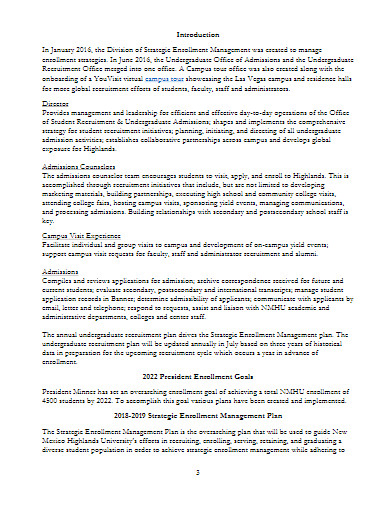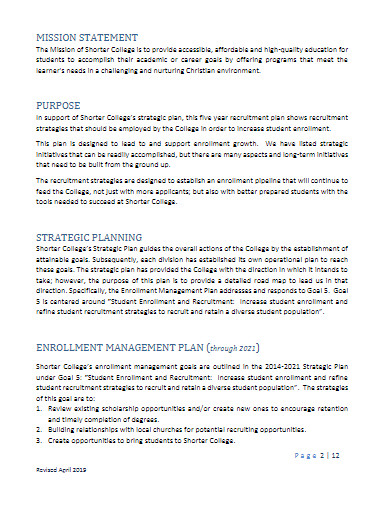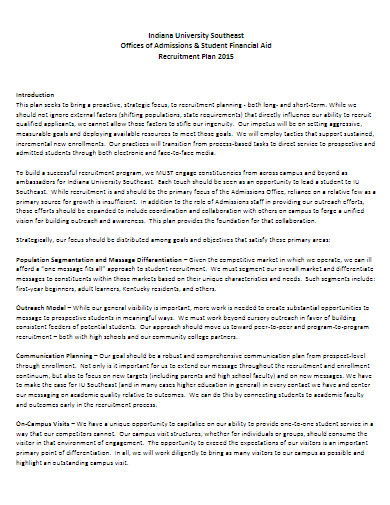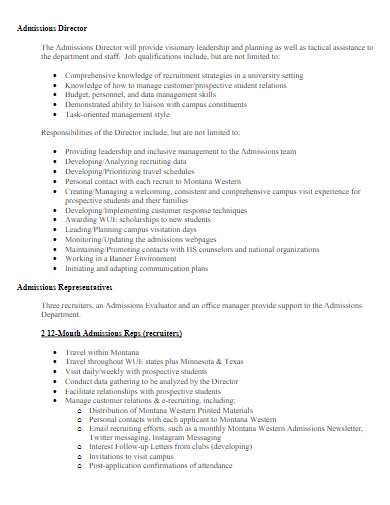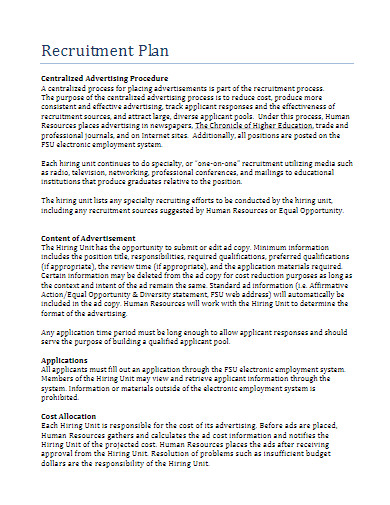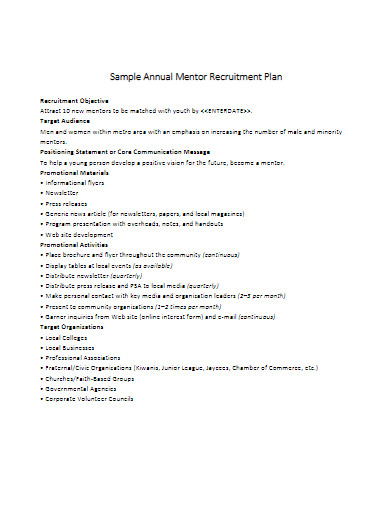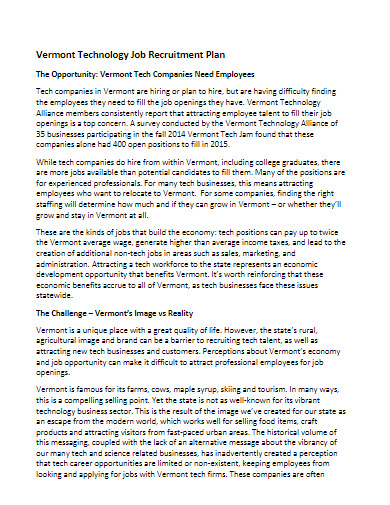15+ Recruitment Plan Examples to Download
Staffing or recruiting is one of the major functions of a business’s human resource department. Before reaching the internal and external selection process, the HR personnel will have to put into careful consideration a lot of things. These include the detailed descriptions of the project’s strategic actions, researches, SWOT analysis, budget, and many more. Along with the digitalization, many employers have widened their scope in advertising their activity. From mere print materials, they are now engaging in many social media platforms. If your organization has a plan to form a team, then you better check out our recruitment plan examples below! A highly relevant article is also available, so make sure not to miss it!
15+ Recruitment Plan Examples
1. Recruitment Plan Template
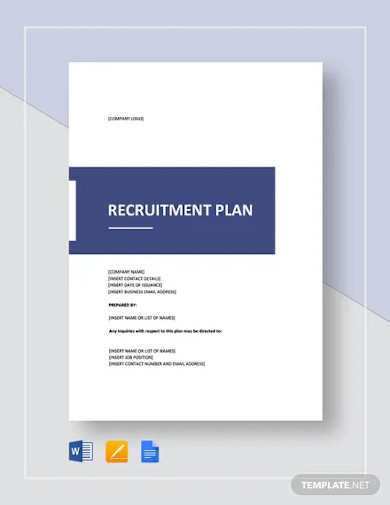
2. Small Business Recruitment Plan Template
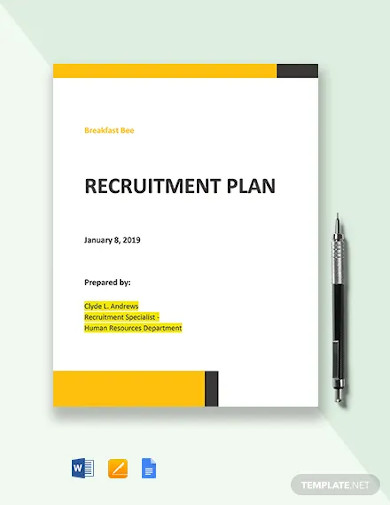
3. Volunteer Recruitment Plan Template
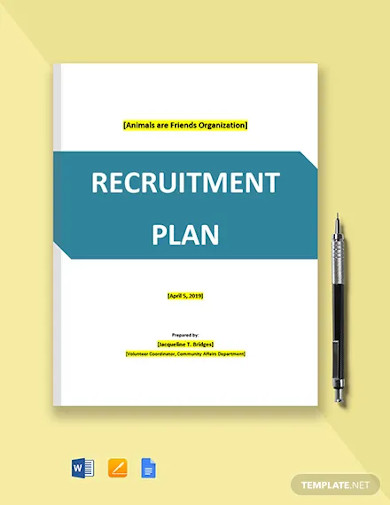
4. Recruitment Project Plan Template

5. Annual Recruitment Plan Template
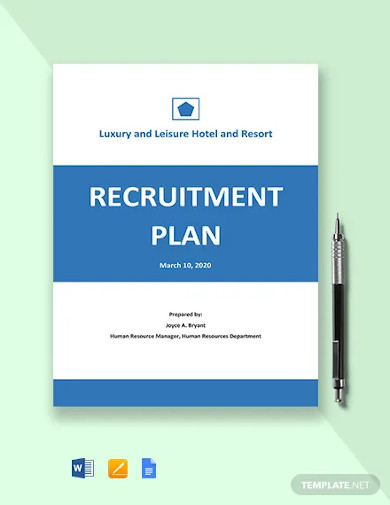
6. Recruitment Staffing Agency Business Plan Template
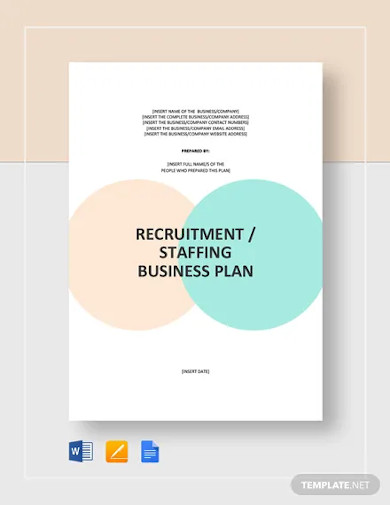
7. Recruitment Strategic Plan Template
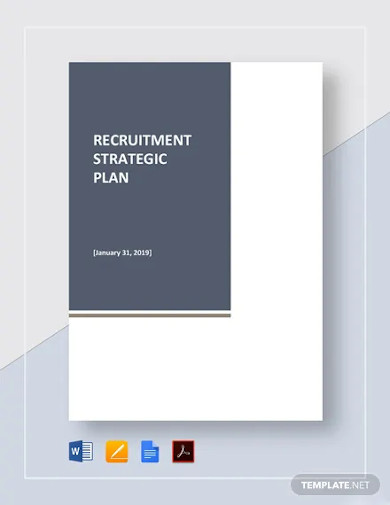
8. Student Recruitment Plan Template
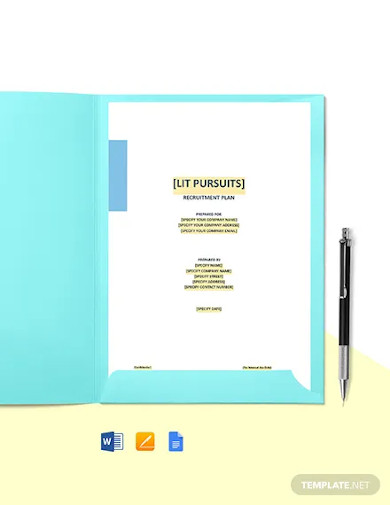
9. Undergraduate Recruitment Plan
10. College Recruitment Plan
11. University Recruitment Plan
12. Graduate Recruitment Plan
13. Admissions Recruitment Plan
14. Sample Recruitment Plan
15. Mentor Recruitment Plan
16. Job Recruitment Plan
What Is a Recruitment Plan?
A recruitment plan is a set of onboarding programs that is put into writing for the guidance of the project’s stakeholders. According to TalentLyft, it can also function as a work timeline that companies can use to find the right job candidate without sacrificing other operations. Just like the other human resource policies and practices, it comes with many benefits. Obviously, one advantage is that it helps employers get the right employee for a certain job. Another is that it helps make the recruitment process more efficient through the fact-based and well-thought actions.
Modern Recruiting
Through the advancements in our means of communication, recruiters find it easier to connect with job applicants. The candidates, on their part, have been given many opportunities to fulfill their job application checklist in a straightforward manner. As the world modernizes, so do the recruitment strategy plans of recruiters. Below, you’ll learn the four stages of modern recruitment.
Stage 1: Excite – locating talent, targeting, and positioning,
Stage 2: Engage – building rapport with potential candidates
Stage 3: Keep – maintaining relationships with unsuccessful hires for future employment
Stage 4: Qualify – evaluating talents carefully and thoroughly
How To Organize a Recruitment Plan
Every organization wants to have the best workforce. However, forming one is not as easy as it seems. For an organization to do so, it needs to formulate and follow a thorough and step-by-step process. Luckily, we have our outline of guidelines ready to walk you through. Not only that, but each step also has its corresponding insight to give you a better understanding of its importance.
1. Create a Job Description
A job description is a document that gives out the complete details about a job opening and the requirements to secure the role. They are used to inform both established internal employees and job seekers about the need for staff. But aside from that function, this type of document is also used by the human resource department and executives to keep track of the existing workforce’s performance. In other words, it serves as a record of their decision criteria when it comes to handling employee-related dilemmas.
2. Select Hiring Tools
After detailing what you need and how the interested individuals can be of solution, it’s time for you to select a tool or two that can help promote them. These tools include word of mouth, online job boards, your company website, social media, staffing agencies, and advertising. Before deciding which ones to utilize, make sure to consider other aspects like company budget, the availability of your resources, and more.
3. Set Preliminary Screening Activities
Days, hours, or even minutes after you’ve publicized your job opening, your recruitment team will start receiving resumes, job application letters, and job application forms. Do an initial selection of these documents and carefully screen the chosen applicants. Some of the effective screening methods include the following:
1. E-mail or Telephone Screening – You can leave messages to the chosen applicants to know more information from them or you can call them straight away to ask them more about themselves.
2. Standard Testing – You provide job evaluation questionnaires, job sheets, evaluation forms, and other documents that can test their capabilities.
3. Portfolio – Project portfolios are great tools to know how good the applicants are in creating a particular product or doing a particular service. These documents consist of outputs from the applicant’s previous employment.
4. Interview Chosen Candidate
Once the applicants pass the screening, you can invite them for interviews. The questions for this part can be of two forms – behavioral and situational. The behavioral questions can help the recruitment team in anticipating how the applicants will behave in the future by basing them on their past behaviors. Meanwhile, the situational questions assist the team in evaluating the applicants’ knowledge, skills, and experience when facing certain situations.
5. Present Job Offer
After the steps above are said and done, present to fortunate applicants the job offer. It could take the form of an employee contract. In presenting such a document, don’t forget to highlight the salary rate, commission, and other incentives to make sure that the applicants won’t back out of the offer.
FAQs:
What’s the difference between recruitment and talent acquisition?
According to Jobvite, recruitment is conducted to hire someone who can fill a vacant position. On the other hand, talent acquisition is strategically directed to employ professionals who specialize in a specific field.
What are the most common job interview questions?
Here are some of the common job interview questions:
1. Why should we hire you?
2. What’s your greatest strength?
3. What’s your greatest weakness?
4. Why did you leave your last job?
5. What’s your expected salary?
What is direct recruitment?
Direct recruitment refers to the pursuit of a specific noteworthy individual to join an organization. This individual could already be a professional or a graduating student.
A company’s workforce is one of its important assets. This is why putting up a serious effort to hire and keep the people in it is a must. These people are the very individuals who drive both the internal and external operations of a company. Even the world-renowned CEO and co-founder of Apple, Steve Jobs, admittedly said, “The secret of my success is that we have gone to exceptional lengths to hire the best people in the world.”



